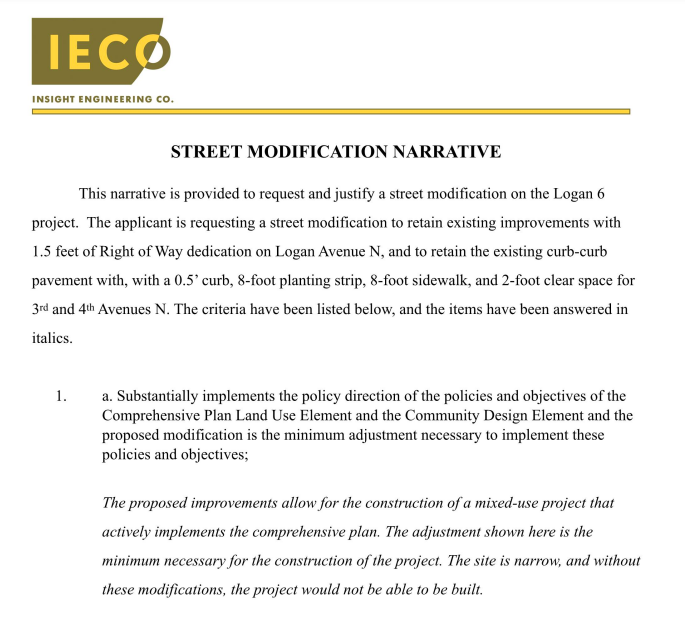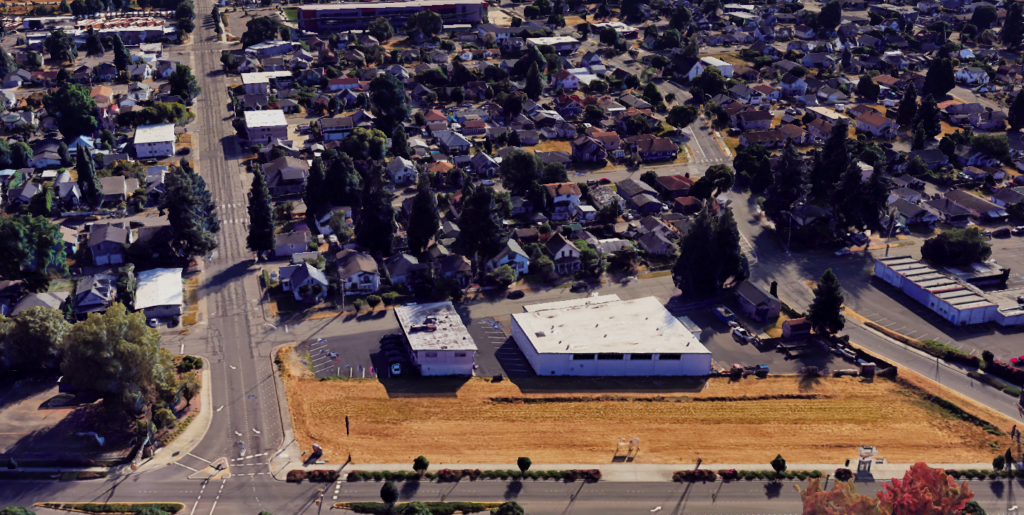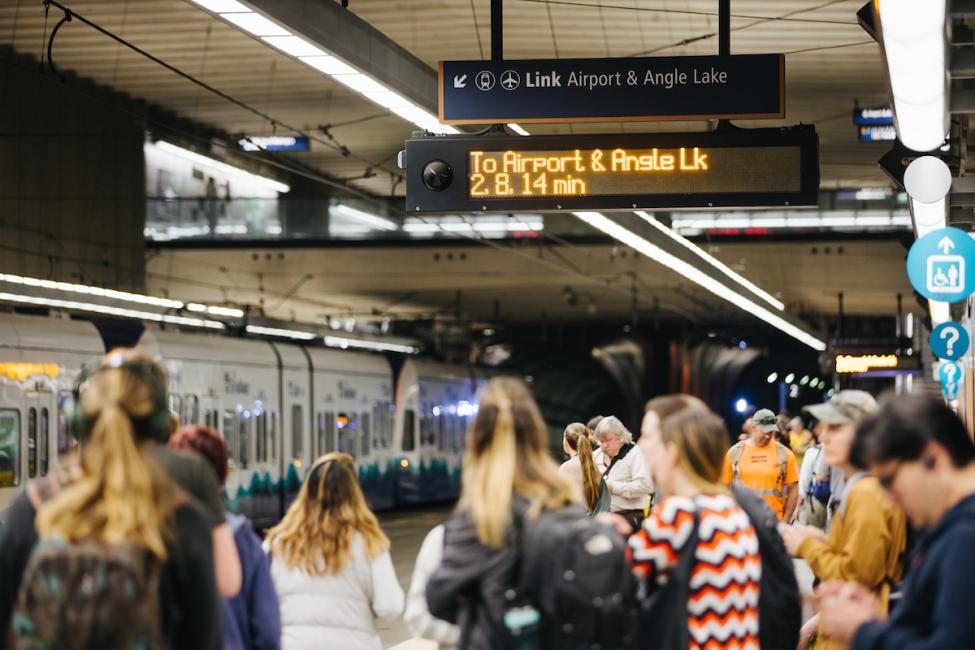Here is the Hearing Examiners Final Decision regarding the file Logan Six – LUA-22-000283 dated 3/3/2025. You can also find the Hearing Examiner’s decision at this link – LUA-23-000283. Also here is the HEX folder with the Land Use link (LUA-23-000283)
Posts in category Traffic
North Renton neighborhood holds protests after Council rejects their request to review projects

North Renton residents were protesting on Logan Ave yesterday. They’ll be doing it again today, starting at 3:30 PM.
North Renton residents have taken the unusual step of organizing protests after being denied an opportunity to work with Renton City Council on their concerns over two years.
Because of Renton City Council’s last minute change to their Hearing Appeals process, residents feel like they’ve never had a proper opportunity to discuss their concerns with the council, and may never get one. The residents consequently asked the Council this past Monday night to implement a moratorium to buy some time for Council and the community to work together on the North Renton concerns, but the Council rejected the motion in a 5 to 1 vote.
Residents feel the planned 100-unit Logan Six apartment project is oversized for its site, has inadequate parking, and should be using the Logan Ave arterial for access as opposed to residential side streets. For over two years City Council had said they were going to review the project on appeal if the residents had concerns following the Hearing Examiner’s review, but then the Council changed their minds on the eve of the Hearing Examiner’s review.
Everyone is currently awaiting the Hearing Examiner’s decision, due for release any day.
Residents are also concerned about parking standards for future projects in this neighborhood. Parking requirements have been sharply reduced in recent years to encourage more people to ride transit, but transit options keep getting delayed, often by years at a time.
State did not require Renton to approve Logan Six with too little parking

The initial submittal for Logan Six in 2022 included a street modification request. Final line of item 1: “The site is narrow, and without these modifications, the project would not be able to be built.” Council could have questioned the scale of the project on the record.
At last night’s council meeting, a Council Member told the audience that the State of Washington forced Renton to approve the Logan Six development with only one parking spot per unit.
This was not correct, for at least two reasons:
Reason 1: The parking standards for this project are very clearly captured in Renton’s zoning code, and the Council put them there as I described in this blog entry here.
While the State of Washington did implement parking regulations in 2020 that could potentially supersede a city’s parking regulations, the state standards specify a minimum standard of one spot per BEDROOM, as opposed to the lesser standard of one spot per unit that Renton has imposed on Logan Six. Here’s the State law on this topic. (Presumably the 0.75 spots per unit applies to studio “no-bedroom” units)
Reason 2: the Council probably had an easy opportunity to stop this project after the first submittal in 2022 if they had wanted to. In the initial submittal for the project, the applicants provided a letter making it absolutely clear that they were concerned the site might be too small for the project.
In the relatively brief two page letter, the applicant says they need a Street Modification because of their overly narrow site. Then they say three times that without this modification, they could not build the project. Here are some excerpts:
“STREET MODIFICATION NARRATIVE
This narrative is provided to request and justify a street modification on the Logan 6 project. The applicant is requesting a street modification to retain existing improvements with. 1.5 feet of Right of Way dedication on Logan Avenue N, and to retain the existing curb-curb. pavement with, with a 0.5’ curb, 8-foot planting strip, 8-foot sidewalk, and 2-foot clear space for. 3rd and 4th Avenues N…..
The site is narrow, and without. these modifications, the project would not be able to be built….
The modification also allows for the project to be built at all, given the narrowness of the site….
The shown modification is required for the building to be done without incurring additional. costs. The site is narrow and if much more were given, the project would likely not pencil….”
Any of Renton’s eight elected officials could have questioned the requested modification, on the record, and consequently questioned whether the project may be too large and dense for the site. Even the rules governing quasi-judicial hearings do not bar Council members from asking questions about a project, on the record. Since the developer said three times they were concerned the project would not fit on the site, this would have been an opportune time to scale it to a better size.
Instead, Council did not ask any questions and City Staff appear to have approved the modification request, enabling the project to go forward.
So no, the State did not require this project to take its present form, pushing the street boundaries set for the zone with consequent minimal parking. That appears to be just a story.
Until Sound Transit and Metro better serve us, Renton should rework our parking standards

Looking east across the site of the proposed Logan Six development (field in lower third of photo), toward the adjacent historic homes in the North Renton neighborhood. Residents are concerned their neighborhood streets will be inundated with cars from the 100-unit Logan Six, which they fear has too little parking for its size. They are also worried about traffic in and out.

Architects rendering of proposed Logan Six Development. The project includes 1, 2, and 3-bedroom apartments, but has only one parking spot per unit.
North Renton residents have brought the long-simmering issue of Renton’s parking requirements back to the forefront. They are rightfully concerned about parking in their neighborhood. As the new Logan Six project makes its way through the process, it would be a good time for Renton Council and staff to reevaluate our parking standards to prevent the kinds of parking controversy that this project has generated.
For decades, King County Metro and other transit advocacy groups have encouraged Renton to reduce our parking requirements. Ten years ago King County Metro Transit concluded a lengthy study capturing their recommendations for “right sized parking” in their service area. The goal of the study was to encourage transit use and lower housing costs by avoiding “overbuilding”of parking.
The recommendations were controversial, because Metro was encouraging Renton and other suburbs to reduce our number of parking spot requirements to Seattle levels, even though our level of transit service was nowhere near as good as Seattle’s. Some of Renton’s Planning Commissioners, Council members, and staff embraced the recommendations, and some of us didn’t.
“The Urbanist” addresses Link light rail capacity challenges

Train headways that were once as brief as 6 minutes pre-pandemic (and were targeted to be 8 minutes) are now heading to ten minutes or more due to vehicle shortages and other financial challenges. Photo credit: Sound Transit
Urban Planner Stephen Fessler published an insightful op-ed in the Urbanist this week, with his suggestions for Sound Transit to get in front of their looming Link Light Rail capacity issues. I hope Sound Transit gives the ideas the consideration they deserve. In previous posts I’ve mentioned that Link Light Rail is running into vehicle shortages, and Mr. Fessler’s suggestions could potentially help mitigate these.
When Sound Transit’s Bus Rapid Transit Stride service gets implemented in Renton in 2028 (originally planned for 2024 ), it will drop passengers at Tukwila and Bellevue Link light rail stations. Link must have capacity and frequent service for the system to offer value to Renton commuters.
An excerpt from Mr. Fessler’s op-ed: “Ultimately, Sound Transit and its board need to understand that Link isn’t a bus, and the agency shouldn’t be in the business of treating it as such. Voters and partner agencies have approved billions of dollars to construct Link exactly because it’s a train, not a bus. But 10-minute frequencies and short trains tell the tale that Link is being run like a glorified bus. A rail line needs high frequencies and sufficient capacity to serve as the backbone of the regional transit network.”


Recent Comments